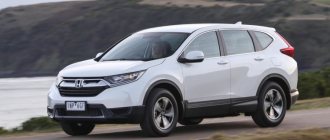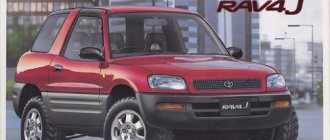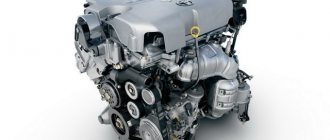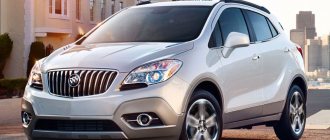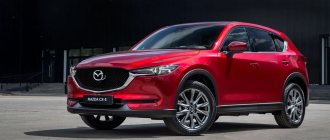Low SUV costs at the gas station are no longer a utopia. The most economical SUVs show results comparable to sedans in terms of fuel consumption.
An SUV means high cross-country ability and strength, but at the same time high costs when refueling.
It is believed that the large mass of the car and a powerful engine a priori determine high fuel consumption.
A consumption of 20-30 liters per 100 km was not surprising a few years ago.
It was believed that if a person spends money on a large SUV, he should be prepared to leave huge sums at gas stations.
Modern technologies allow manufacturers to cope with this problem, and now we can say that the “gluttony” of an SUV is gradually becoming a myth.
What determines gasoline consumption?
Automakers started thinking about solving the problem of fuel consumption after the oil crisis in the 70s of the last century. Oil and all related products have risen sharply in price, and because of this, buyers began to pay more attention to gasoline consumption. Soon this characteristic became one of the main ones when choosing a car. There are many factors that increase fuel consumption to a greater or lesser extent. Here are a few main ones:
- Features of machine operation. Modern cars have a precise fuel dosage system, are equipped with a catalyst in the exhaust system and feedback on the composition of the exhaust gases.
- Manner (style) of driving a car. The operating principle of an internal combustion engine involves increasing the supplied fuel to generate energy and increase power. Thanks to this principle, fuel consumption increases during long periods of driving at high speed, sudden changes in speed, or, conversely, when the speed limit does not correspond to the gear engaged.
- Malfunctions of the engine or its systems. The dosage of fuel supply in case of various damages or malfunctions will be inaccurate, and therefore the fuel will not burn completely. Modern cars are equipped with a system for diagnosing inconsistencies during injection, which signals this fact.
- Inadequate resistance when moving. Poor body aerodynamics, faulty transmission, insufficient tire pressure, too much weight loaded in the cabin and trunk.
If these factors are controlled, consumption will be significantly reduced and service life will increase.
SUV and crossover
It is also worth mentioning the difference between SUVs and crossovers. Many people believe that the main difference is the frame. But it's not entirely about her. The crossover is a mixture of an SUV and a passenger car that feels at home both in the city and on rugged terrain. Crossovers generally have lower fuel consumption, so they will be more economical. However, they are inferior to SUVs in terms of power. Recently, crossovers have become increasingly popular in Russia due to the poor quality of roads. Where the driving characteristics of a passenger car are lacking, a crossover will pass without difficulty. Decide which vehicle to purchase based on your needs. Listed above are the main characteristics that should be considered when choosing an economical SUV.
Similar articles
- Niva on tracks - a hunter's dream
- Niva tuning: preparing the car for off-road use with the advice of a professional
- Brake system UAZ loaf
- A holiday for collectors of car mini-copies from the magazine “Autolegends of the USSR”
- Model range of domestic SUVs LuAZ
- LuAZ 969m tuning to a tourist SUV
←Return
Lincoln Navigator Select
The Lincoln Navigator is Ford's flagship luxury SUV and one of the most fuel-efficient SUVs available. Reborn last year, the Navigator has gone from a commendable full-size premium sport utility vehicle to one of the best available on the market today. With its extravagant exterior and stunning interior, the Navigator 3-row SUV now competes with giants such as the Mercedes-Benz GLS, the new BMW X7 and the Cadillac Escalade.
Lincoln Navigator Select
The Navigator also boasts more interior space, and if you need extra space, it can be had in a longer version called the Navigator L. All models are available with 7 or 8 seats, and 4-wheel drive (4x4) offered separately over standard rear-wheel drive (4x2). The Navigator boasts a twin-scroll V6 that, despite having two fewer cylinders than some competitors, has more power at 450 horsepower.
Advantages and disadvantages
If you want a large, powerful, 3-row luxury SUV loaded with technology and amenities, and capable of hauling up to 10,000 pounds, the Lincoln Navigator fits the bill. L variants offer even more cargo space in a luxurious interior.
The SUV may be too bulky for some drivers. If you want a similar level of luxury in a small body, stay tuned for news on the upcoming 2020 Lincoln Aviator, or check out the new BMW X7, Volvo XC90, or Mercedes-Benz GLS. It's also disappointing that safety features like automatic emergency braking have to be purchased separately in a car that costs over RUB 4,800,000.
Navigator Reserve models come standard with the Tech Pack, and audio enthusiasts will appreciate the inclusion of a CD player with the Revel Ultima. On Black Label models, 30-post front seats become standard and second-row seats are offered separately.
Under the hood
There's only one engine available in the affordable Navigator, but it's a good one: a 450-horsepower version of Ford's excellent 3.5-liter twin-turbocharged EcoBoost V6. There's plenty of power, significantly more than in the Expedition, and Lincoln makes good use of it thanks to the 10-speed automatic transmission. While the powerful V6 isn't exactly fast for a sports car, it accelerates easily from a stop.
Lincoln Navigator Select interior
When properly equipped, an SUV can carry up to 4 tons of cargo. Unlike many high-quality engines, this one does not require premium unleaded fuel. For a full-size SUV, fuel consumption is quite good - from 10.2-11.2 liters. per 100 km. on the highway, depending on the model.
Available transmission:
- 3.5-liter twin-turbocharged V6; 450 horsepower at 5500 rpm; 690 Nm of torque at 3000 rpm; fuel consumption in the city/highway – 14.7/10.2 l. per 100 km. (Navigator 4×2), 14.7/10.7 l. (Navigator L 4×2), 14.7/11.2 l. (Navigator and Navigator L 4x4).
Honda CR-V
The long-lasting Honda CR-V also made it onto our list of the six most fuel-efficient SUVs. Thanks to the use of cosmetic updates and technical innovations, it has been a success on the market for 20 years. Its good aerodynamics of a streamlined body helps ensure that the CR-V has low fuel consumption of 5.2 liters per 100 kilometers. The turbodiesel engine developed by Honda plays an important role in this. It is characterized by good traction performance at low speeds.
Cadillac Escalade Premium Luxury
The Cadillac Escalade is a full-size luxury SUV that unashamedly declares itself the king of the ratings in Russia with copious amounts of chrome trim, linear meters of leather, a massive 6.2-liter V8 engine producing 420 horsepower and virtually every electronic gadget known to the auto industry. Offered in regular and king sizes (Escalade ESV), and based on the Chevy Suburban, the Escalade has everything it needs to keep up with the Infiniti QX80, Land Rover Range Rover and Lexus LX. But the Escalade's true enemy is the stunning new Lincoln Navigator, an equally large luxury SUV that offers more power, better payload ratings, a more spacious and modern interior, plus better crash test scores.
Advantages and disadvantages
The Cadillac Escalade is certainly impressive, with seating for up to eight people and a towing rating of 3,760 kg. and an abundance of wood, leather and modern electronics. If your garage is big enough, this is the SUV you've been looking for.
Cadillac Escalade Premium Luxury
If you don't need a full-size SUV, there are plenty of luxury liners that are smaller than the Escalade but equally capable and comfortable. An SUV with a body like the Mercedes-Benz GLS550 or Lincoln Aviator may be easier to drive, while wealthy eco-friendly models may offer the Land Rover Range Rover Sport plug-in hybrid.
Standard and optional equipment
Standard luxuries on the new Cadillac Escalade include 12-way power-adjustable seats, 20-inch chromed aluminum wheels, Magnetic Ride Control and hands-free automatic door release. Remote starter, tri-zone climate control and a reconfigurable instrument cluster enhance the Escalade's appeal, as do a power folding third-row seat, heated and cooled front seats, front and rear parking sensors, rain-sensing wipers, a surround sound system, a security camera, and an automatic system. Park Assist, Apple CarPlay and an Android-compatible 16-speaker Bose Centerpoint audio system with on-board Wi-Fi, CUE with navigation and a power tilt/telescoping steering wheel with heated leather-wrapped steering wheel. Also standard are Automatic Park Assist, which can virtually parallel park an SUV, and Surround Vision, which provides a bird's-eye view of the vehicle and its surroundings.
The Cadillac Escalade comes with all the options: lane departure warning, lane keeping assist, adaptive cruise control, side blind zone, rearview mirror, cross traffic alert, upgraded brake systems and 22-inch wheels.
Cadillac Escalade Premium Luxury interior
For buyers looking for the most bang for their buck, the well-stocked Platinum line comes with semi-aniline Nappa leather, microfiber and suede lining, and an 18-way climate-controlled front seat with driver-side massage function. Also available are a head-up display, a sunroof, and a rear-seat entertainment system with a 9-inch screen, wireless headphones and a remote control. Top Platinum models have a unique chrome grille, power-sliding side steps, a suede headliner, and a leather-wrapped instrument panel and console.
Under the hood
Cadillac offers only one engine choice for the Escalade and Escalade ESV: a 6.2-liter V8 making 420 horsepower and 620 lb-ft of torque. Standard models are rear-wheel drive (2WD), with a 4-wheel drive (4WD) option available at an additional cost. Regardless of drive mode, GM's latest 10-speed automatic transmission takes care of the power delivery, delivering smooth shifts and pretty respectable highway fuel economy considering the car's hefty weight. Premium fuel is not required, but is recommended, helping save money at the pump when you don't need all the muscle and power of the Escalade's big V8.
Available transmission options:
- 6.2-liter V8; 420 horsepower at 5600 rpm; 620 Nm of torque at 4100 rpm; fuel consumption in the city/highway – 16.8/10.2 l. per 100 km. (2WD), 16.8/11.2 l. (4WD), 16.8/10.2 l. (ESV 2WD), 16.8/11.2 l. (ESV 4WD).
Volkswagen Touareg
Volkswagen Touareg can be called an “ace in the matter of economy”. Despite 174 horsepower and 2.2 tons of empty weight, it has a consumption of just 6 liters in normal conditions. One of the technical features of the Touareg that reduces its fuel consumption is the air suspension. But besides this, the low consumption is based on a “long gearbox” and an economical engine. It may be noisy due to the operation of the pump injectors, but it is economical. The driving characteristics, comfortable interior, and off-road confidence are pleasing. And price aside, the diesel-powered Volkswagen Touareg is arguably the best choice in its class.
Dodge Durango
The Dodge Durango has its own special place in the automotive world. It's a mid-size SUV that offers V8 power and a remarkable 3,900 kg payload capacity. It can also seat up to seven people, with plenty of room for adults in the third row.
Dodge Durango
There is nothing else that can match this combination of talent, especially at Durango's price level. Of course, this generation has been on sale since 2011, which is a long time in cars, but it still has a lot to offer. For example, Apple CarPlay/Android Auto smartphone integration comes as standard, a user-friendly infotainment system and solid off-road performance thanks to 20cm of ground clearance and (optional) all-wheel drive.
Advantages and disadvantages
Buy the Durango if you want a full-size SUV in a midsize body, including a V8.
If the V8's low power consumption, roomy accommodations, great towing capacity and useful off-road capabilities are lower priorities, you have other choices, especially if you're also trying to keep fuel costs within reason. If that's your goal, consider the Honda Pilot, Toyota Highlander or Kia Sorento.
The GT trim gets a redesigned front end. A new 20-inch alloy wheel design becomes available. The kit includes a built-in trailer brake. An 825-watt/19-speaker Harman Kardon audio system is also available. The Citadel model has 2-row seats as standard.
Under the hood
The 3.6-liter V6, which is standard on lower Durango trims, is capable of respectable acceleration and strong passing. It's also less thirsty than its V8 counterparts. The 5.7-liter V8 is standard on the R/T and optional on the Citadel; The 6.4-liter V8 is exclusive to the all-wheel drive (and frighteningly fast) SRT.
Dodge Durango interior
The rest of the range has rear-wheel drive (RWD) as standard, with all-wheel drive (AWD) on their options lists. All engines are linked to an 8-speed automatic transmission, and the V8s can shut down four cylinders under light loads to save gas.
Available transmission options:
- 3.6-liter V6; 293 horsepower at 6,400 rpm (single exhaust); 295 horsepower at 6400 rpm (dual exhaust); 350 Nm of torque at 4800 rpm; Fuel consumption in the city/highway – 12.3/9 l. per 100 km. (RWD), 13/9.4 l. (AWD).
- 5.7-liter V8; 360 horsepower at 5150 rpm; 520 Nm of torque at 4250 rpm; fuel consumption in the city/highway – 16.8/10.7 l.
- 6.4-liter V8; 475 horsepower at 6000 rpm; 640 Nm of torque at 4300 rpm; Fuel consumption in the city/highway – 18/12.3 l.
Suzuki SX4
This Japanese SUV is in fourth place with the consumption of the diesel version being 4.4 liters in city-highway mode.
The diesel version is represented by a 1.9-liter engine with a performance of 120 hp. With. for cars on the domestic market and a 135-horsepower turbocharged diesel engine for the European market.
Available in front-wheel drive and all-wheel drive versions with a ground clearance of 19 cm.
The modified petrol model is equipped with a 1.6 liter engine developing 112 hp. With.
Ford Flex
The Ford Flex doesn't follow the standard rules of the most fuel-efficient SUVs. Assuming the rules include strict classifications for SUVs, station wagons and minivans, as well as the stipulation that each vehicle must be renewed every two or three years. Instead, the Flex exists in its own universe, where function trumps style and where it's acceptable to incorporate various automotive elements to become a true SUV.
Ford Flex
Luckily, Flex has the right attributes to make sense in this universe as well. Within its square confines are three rows of seating with enough space to accommodate up to seven passengers and cargo options that make it very flexible indeed. Competitors like the Honda Pilot and Toyota Highlander tend to have relatively high ride lines.
Advantages and disadvantages
Space and accessibility are high on the list of priorities. The Flex has a slightly elevated driving position that appeals to many people. If you need the added confidence of all-wheel drive, the Flex doesn't have to. The powerful 365-horsepower V6 engine should also be highlighted.
It is important to have the latest machine and the technology that goes with it. This is not the case with Flex. Some advanced features are available—such as intelligent cruise control with collision mitigation and semi-automatic parallel parking—but only as an option on the most expensive trim level.
The Flex enters its final model year without significant changes. Last year's model dropped the rear-seat entertainment option. In terms of styling, the Flex remains unchanged.
Under the hood
The engine for the model comes with either a naturally aspirated 3.5-liter V6 or an optional 3.5-liter turbocharged V6. The standard engine does its job well enough to make an alternative an indulgence rather than a necessity.
Ford Flex interior
Even though both engines are good with regular unleaded gasoline (turbocharged engines often require premium fuel), fuel economy isn't as good as crossover SUVs like the Honda Pilot and Toyota Highlander. The only transmission is a 6-speed automatic; the turbo version in the Limited model also has steering wheel-mounted paddle shifters. Front-wheel drive (FWD) is the default option.
Available transmission options:
- 3.5-liter V6; 287 horsepower at 6500 rpm; 345 Nm of torque at 4000 rpm; fuel consumption in the city/highway – 14.7/10.2 l. (FWD), 14.7/10.7 l. (AWD).
- 3.5-liter twin-turbocharged V6; 365 hp at 5500 rpm; 475 Nm of torque at 1500-5250 rpm; Fuel consumption in the city/highway – 15.7/11.2 liters. per 100 km. (AWD).
Mercedes Benz GLA 200
Fifth place went to the German manufacturers Mercedes Benz GLA 200, which will need 4.5 liters of fuel to cover 100 km in the combined cycle.
In the line of “rogues” of the Mercedes concern, the GLA 200 is the smallest. The ground clearance of the basic version is 15.7 cm. In modified versions, the ground clearance was increased to 18.7 cm, which became a crossover indicator.
Structurally, the GLA 200 has a low body, which is highly effective in terms of aerodynamic properties. A device with a low aerodynamic drag coefficient. Due to the proposed design, the drag does not exceed 0.66 m².
The Germans offer three turbocharged engines: one diesel and two petrol. Forced diesel units (2.1 l) are available in two versions with a capacity of 136 and 170 hp. With.
The standard basis is a 1.6 liter 4-cylinder petrol engine with a working volume, producing 156 hp. With. The top equipment is a 2-liter 211-horsepower power plant.
Chevrolet Traverse 2020
The Chevrolet Traverse is a comfortable and competent SUV that falls somewhere in the middle of the segment. Among 3-row SUVs, the Traverse is now just one of a dozen options, including stalwarts like the Honda Pilot, Toyota Highlander and Ford Explorer, as well as upstarts like the Subaru Ascent, Kia Telluride and Hyundai Palisade. The competition has never been tougher.
Chevrolet Traverse 2020
The Traverse is attractive with one of the lowest starting prices, a premium grade and a standard V6, but it stalks the competition in one glaring way: Unlike most competitors, the Traverse doesn't have active safety features like automatic emergency braking and lane keeping. Such features are available, but they require a more expensive package. To get adaptive cruise control, your only choice is the High Country trim, which starts at RUB 3,500,000.
Advantages:
- Slightly lower starting price than competitors.
- Standard V engine
- Standard Apple CarPlay/Android Auto integration.
- Choice of seating for seven or eight passengers.
- More than other mid-size SUVs.
Flaws:
- Doesn't come with advanced security features that are easily found in competitors.
- Active safety and driver assistance cost extra.
- Adaptive cruise control is available only in the High Country package costing more than 3,500,000 rubles.
- Automatic engine start/stop cannot be disabled.
